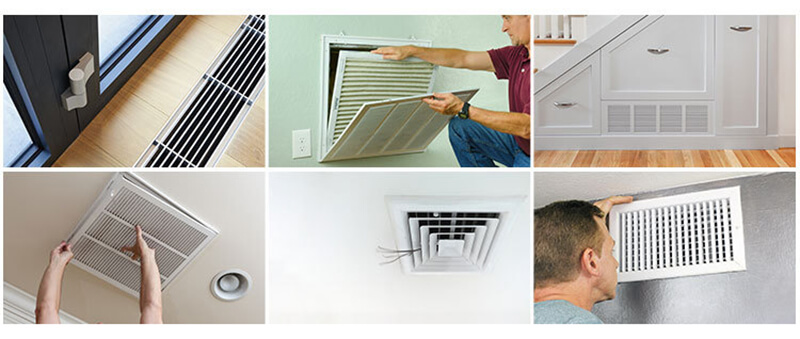Return air grills and diffusers are often the unsung heroes of a home’s HVAC (Heating, Ventilation, and Air Conditioning) system. Their primary function is to facilitate the efficient flow of air back to the air handler, ensuring a balanced and comfortable indoor climate. However, the significance of these components extends beyond mere air circulation.
Incorrectly sized return air grills and diffusers can lead to a multitude of problems, from inefficient energy use to compromised air quality. An oversized grill might pull in too much air, leading to unnecessary strain on your HVAC system, while an undersized one can restrict airflow, resulting in poor temperature regulation and discomfort. This mis-sizing not only impacts your home’s comfort but also reflects on your energy bills.
This article aims to demystify the complexities surrounding the sizing of return air conditioning grills and diffusers. Here will walk you through the key considerations, steps, and best practices for sizing your HVAC return components correctly.
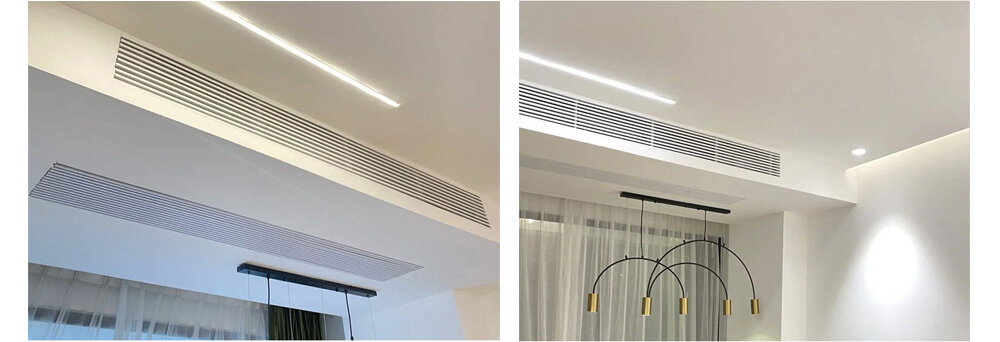
Understanding Return Air Grills and Diffusers
Return air grills and diffusers play a pivotal role in maintaining the efficiency and effectiveness of HVAC systems. Their primary job is to regulate and recycle air back into the system for heating or cooling. This circulation process is crucial for maintaining consistent indoor temperatures and ensuring air quality.
What Are Return Air Grills and Diffusers?
Return air grills are the vent covers through which air is pulled back into the HVAC system. They are typically larger than supply vents and are located strategically in a building to maximize airflow efficiency. Diffusers, on the other hand, are used to direct airflow in a specific pattern or direction, often located in ceiling, wall, or floor assemblies.
Types and Variations
There is a variety of return air grills and diffusers available, each designed for specific scenarios and requirements. Common types include:
- Fixed blade grills: Ideal for general use, offering a balance between efficiency and cost-effectiveness.
- Adjustable blade grills: These allow for control over the direction of airflow, suitable for rooms with specific ventilation needs.
- Linear diffusers: Often used in modern architecture, they provide an even distribution of air along their length.
- Perforated diffusers: Best for creating a dispersed airflow, often used in residential settings for a more aesthetic appearance.
Impact on Air Quality and Energy Efficiency
Properly sized and installed return air grills and diffusers are essential for maintaining indoor air quality. They help in filtering out dust and other particles, ensuring that the air circulated through the system is clean. Moreover, efficient circulation facilitated by well-designed grills and diffusers can lead to significant energy savings. This is because the HVAC system doesn’t have to work as hard to heat or cool the space, leading to lower energy consumption and reduced wear on the system.
The Importance of Correct Sizing
The sizing of return air grills and diffusers is not just a matter of fitting a component into a space; it’s about ensuring the optimal performance of the entire HVAC system. Correct sizing directly influences the system’s ability to maintain temperature, air quality, and overall efficiency.
Impact of Size on System Performance
A key aspect of HVAC system design is ensuring that the size of the return air components matches the system’s capacity. Undersized grills and diffusers can lead to restricted airflow, making the system work harder to circulate air. This not only reduces efficiency but can also cause long-term damage to the HVAC system. Conversely, oversized components can lead to excessive airflow, which might seem beneficial but can disrupt the system’s balance and reduce its effectiveness in temperature control and air filtration.
Problems Arising from Incorrect Sizing
Incorrect sizing of return air grills and diffusers can result in several issues, including:
- Noise: Improper sizing can lead to noise issues due to the turbulent flow of air.
- Energy Loss: An overworked or inefficient HVAC system consumes more energy, leading to higher utility bills.
- Uneven Heating or Cooling: Areas of the building may not receive adequate air circulation, leading to hot or cold spots.
Benefits of Proper Sizing
On the other hand, correctly sized return air grills and diffusers offer significant benefits:
- Improved Energy Efficiency: A well-balanced system uses less energy, which is both cost-effective and environmentally friendly.
- Enhanced Comfort: Correct sizing ensures even distribution of air, maintaining consistent temperatures throughout the space.
- Longevity of the HVAC System: Proper airflow reduces strain on the system, potentially extending its lifespan.
Optimal Sizing: A Critical Element for HVAC Health
The correct sizing of return air grills and diffusers is a critical element in maintaining the health and efficiency of an HVAC system. This section underscores the importance of meticulous calculation and consideration in the sizing process, not only for immediate comfort and efficiency but also for the long-term well-being of the HVAC system.
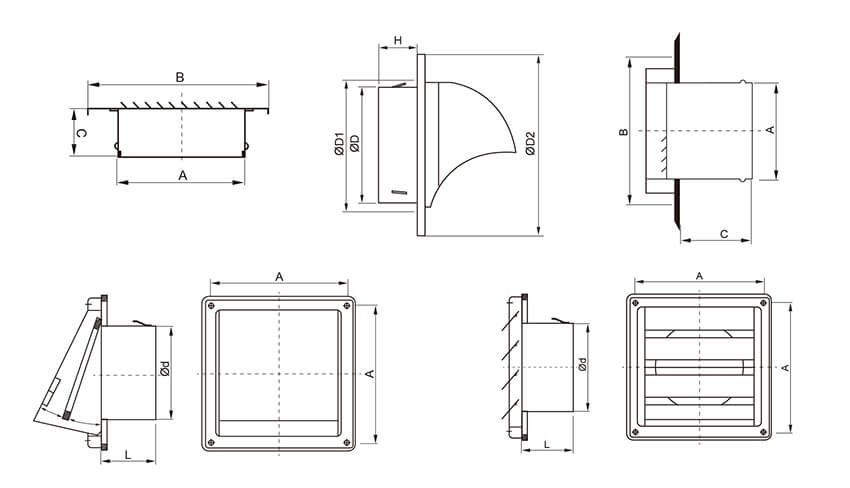
Factors Affecting Sizing
The process of sizing return air grills and diffusers involves several critical factors. Understanding these variables is key to achieving the optimal balance between HVAC efficiency and indoor comfort.
Room Size and Layout
- Square Footage: The size of the room is a primary determinant of the required grill and diffuser size. Larger rooms will generally require larger or more return vents to facilitate adequate airflow.
- Room Configuration: The layout, including the placement of doors, windows, and furniture, can affect airflow patterns and thus influence sizing decisions.
HVAC System Capacity
- System Specifications: The capacity of your HVAC system, often measured in tons or BTUs (British Thermal Units), directly impacts the size of return air components needed.
- Balancing with Supply Vents: It’s crucial to balance the return air capacity with the supply vents to maintain system efficiency.
Airflow Requirements
- Air Changes Per Hour (ACH): This refers to how many times the air in a room needs to be replaced each hour. Different spaces, depending on their use, require different ACH rates.
- Design Airflow: Calculating the design airflow, which is the rate at which air moves through space, is essential for sizing.
Local Climate and Building Insulation
- Climate Considerations: The local climate can influence the HVAC system’s load, affecting the sizing of return air components.
- Insulation Quality: Well-insulated buildings may require different airflow rates compared to poorly insulated ones, impacting grill and diffuser sizing.
Industry Standards and Regulations
- Building Codes: Local building codes often have specific requirements for HVAC installations, including return air components.
- Industry Best Practices: Adhering to established HVAC industry standards ensures safety, efficiency, and compliance.
Integrating Multiple Factors for Accurate Sizing
Proper sizing of return air grills and diffusers is a complex task that requires integrating these various factors. A comprehensive understanding of room dynamics, system capacity, airflow requirements, environmental conditions, and regulatory standards is essential for accurate and efficient sizing. This multi-faceted approach ensures that the return air components not only fit the space aesthetically but also function optimally within the broader HVAC system.
Step-by-Step Guide to Sizing
Accurately sizing return air grills and diffusers is essential for the optimal performance of your HVAC system. This step-by-step guide will walk you through the process, ensuring you account for all necessary factors.
Let’s take a look at a video for reference first
1. Preparing for Sizing: Tools and Materials
- Measuring Tape: Essential for accurate room and vent measurements.
- Calculator: For performing airflow and sizing calculations.
- Sizing Charts: Often provided by manufacturers, these can guide you in determining the appropriate size based on your measurements and calculations.
2. Measuring Room and Vent Size
- Room Dimensions: Measure the length, width, and height of the room to calculate its total volume.
- Existing Vent Size (if applicable): Measure the dimensions of any existing return vents.
3. Calculating Airflow Requirements
- Determine Air Changes Per Hour (ACH): Identify the recommended ACH for the room’s use (e.g., living spaces, kitchens, bathrooms).
- Calculate Air Volume: Multiply the room volume by the ACH to find the total cubic feet of air needed per hour.
- Convert to CFM (Cubic Feet per Minute): Divide the total cubic feet per hour by 60 to get the airflow requirement in CFM.
4. Adjusting for Specific Room Characteristics
- Consider Windows and Doors: Adjust calculations for rooms with large windows or multiple doors, as these can affect air circulation.
- Account for Ceiling Height: Taller ceilings require more air movement; adjust your sizing accordingly.
- Factor in Occupancy: Rooms with higher occupancy may need more frequent air changes.
5. Case Examples for Different Room Types
- Example for a Bedroom: Walk through a sample calculation for a standard bedroom, highlighting adjustments for a large window.
- Example for a Kitchen: Demonstrate how to account for higher ACH requirements in a kitchen.
Finalizing Your Sizing Decisions
Once you have calculated the required CFM for each room, compare this to the manufacturer’s specifications for return air grills and diffusers. Choose a size that meets or slightly exceeds your calculated CFM requirement. Remember, it’s better to err on the side of slightly more airflow than not enough.
Seeking Professional Advice
While this guide provides a basic framework, consulting with an HVAC professional is recommended for complex situations or when in doubt. They can provide expertise and ensure that your sizing aligns with all necessary standards and best practices.
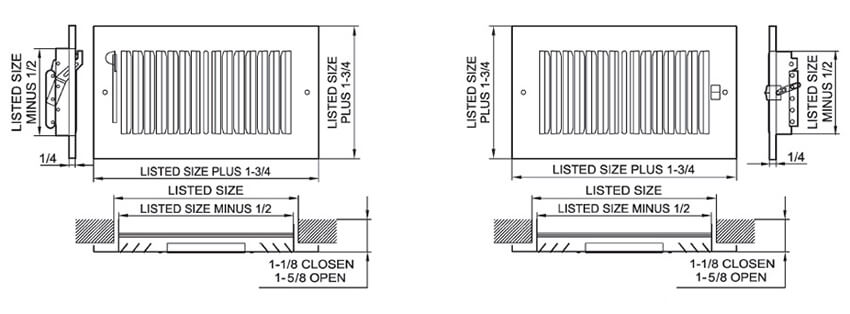
Professional vs. DIY Sizing
When it comes to sizing return air grills and diffusers, homeowners and building managers often face the decision of whether to undertake the task themselves or consult a professional. This section will explore the benefits and considerations of both approaches.
The DIY Approach: Tips and Best Practices
Empowerment Through Self-Sizing:
- Educational Value: DIY sizing can be a valuable learning experience, offering a deeper understanding of your HVAC system.
- Cost Savings: Handling the sizing yourself can save on professional fees.
Best Practices for DIY Sizing:
- Thorough Research: Ensure you understand all the factors involved in sizing, as discussed in previous sections.
- Precision in Measurements: Accurate measurements are crucial; double-check all figures.
- Use of Online Tools and Resources: Leverage online calculators and sizing guides provided by reputable HVAC sources.
When to Consult a Professional
Complexity and Accuracy:
- Complex Systems: In buildings with complex HVAC systems or non-standard layouts, professional expertise is invaluable.
- Guaranteed Accuracy: Professionals bring experience and tools that ensure sizing is done correctly, which is crucial for system efficiency and longevity.
Professional Insight:
- Compliance with Codes and Regulations: Professionals are up-to-date with local building codes and industry standards.
- Access to Advanced Tools: They use advanced tools for more precise measurements and calculations.
Risks of DIY Sizing
Potential Pitfalls:
- Miscalculations: Incorrect sizing can lead to inefficiency, increased energy costs, and discomfort.
- Overlooking Key Factors: Professionals are trained to consider all variables, some of which might be missed in a DIY approach.
Balancing DIY Enthusiasm with Professional Prudence
Making an Informed Decision:
Weigh the benefits of learning and cost-saving against the risks of potential inaccuracies and oversights. For simple projects, a DIY approach might be sufficient, but for more complex scenarios, the expertise of a professional is advisable.
Collaborative Approach:
Consider a hybrid approach where preliminary sizing is done personally, followed by professional verification. This way, you can benefit from the learning experience while ensuring accuracy and compliance.
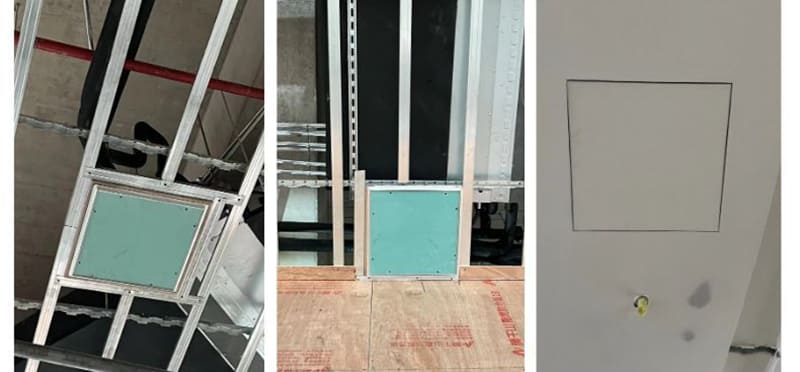
Maintenance and Upkeep
Regular maintenance of return air grills and diffusers is crucial for sustaining the efficiency and longevity of your HVAC system. This section outlines essential maintenance practices and signs that indicate a need for resizing or upgrading.
Routine Cleaning and Inspection
Preventive Maintenance:
- Cleaning Grills and Diffusers: Regular cleaning of return air components is vital to prevent dust and debris buildup, which can impede airflow and reduce efficiency.
- Inspection for Damage: Periodically inspect grills and diffusers for any signs of damage, wear, or corrosion that could affect performance.
Best Practices for Cleaning:
- Frequency: Clean return air grills and diffusers at least once every season, or more often in environments with high dust levels.
- Method: Use a vacuum to remove dust and a damp cloth for more thorough cleaning, avoiding harsh chemicals that can damage the components.
Signs That Resizing Might Be Necessary
Identifying the Need for Change:
- System Strain: Noticeable stress on your HVAC system, such as increased noise or reduced efficiency, may indicate a need for resizing.
- Renovations or Layout Changes: If you’ve made significant changes to the interior layout or added extensions to your property, re-evaluating the size of your return air components is advisable.
Upgrading Options for Better Efficiency
Embracing Modern Solutions:
- Energy-Efficient Models: Consider upgrading to more energy-efficient grills and diffusers, which can improve overall system performance.
- Smart HVAC Components: Modern smart grills and diffusers can automatically adjust airflow based on real-time needs, enhancing both comfort and efficiency.
Professional Consultation for Upgrades:
Before making any upgrades, consult with an HVAC professional to ensure compatibility with your existing system and to maximize the benefits of the new components.
Innovative Trends and Future Outlook
The HVAC industry is constantly evolving, with new technologies and trends shaping the future of home and building climate control. This section will explore the innovative trends in return air grill and diffuser technology and their implications for the future.
Smart HVAC Systems
Integration of Technology and Comfort:
- Automated Sizing and Adjustment: Advanced systems now feature smart return air components that can automatically adjust sizing based on real-time airflow requirements, optimizing efficiency and comfort.
- Remote Monitoring and Control: The rise of smart home technology allows for the remote monitoring and adjustment of HVAC systems, including return air components, providing enhanced user convenience and energy savings.
Eco-Friendly Materials and Designs
Sustainability in HVAC:
- Environmentally Friendly Materials: There’s a growing trend towards using sustainable materials in HVAC components, reducing the environmental footprint of manufacturing and operation.
- Energy-Efficient Designs: Innovations in design are focusing on improving energy efficiency, further reducing the carbon footprint and operational costs.
Future Technologies in Air Distribution Systems
A Glimpse into What’s Next:
- Personalized Climate Control: Future developments may include highly personalized air distribution systems that can adjust the climate of individual rooms based on personal preferences and occupancy.
- Integration with Renewable Energy Sources: As renewable energy becomes more prevalent, return air systems may be designed to integrate more seamlessly with these energy sources, enhancing overall system sustainability.
Adapting to Changing Needs and Technologies
The HVAC industry’s future is geared toward creating more efficient, user-friendly, and environmentally sustainable systems. Staying informed about these trends is crucial for homeowners and professionals alike, as it influences decisions regarding upgrades, maintenance, and new installations.
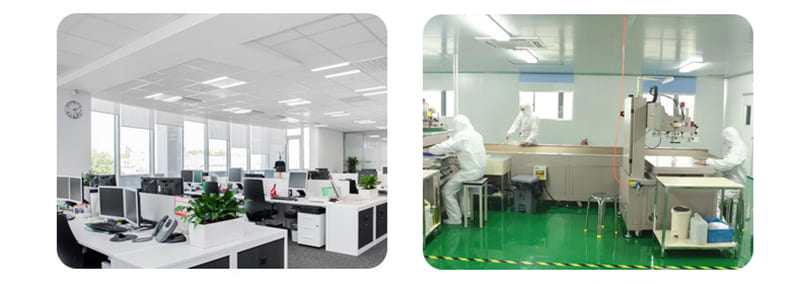
Conclusion
As we conclude this comprehensive guide, let’s revisit the essential points that have been covered and reflect on the significance of correctly sizing return air grills and diffusers in HVAC systems.
The Essence of Proper Sizing
- Optimal System Performance: The correct sizing of return air components is critical for maintaining efficient and effective HVAC operation. It ensures balanced airflow, leading to consistent temperatures and improved air quality.
- Energy Efficiency and Cost Savings: Properly sized grills and diffusers contribute significantly to reducing energy consumption, which translates into lower utility bills and environmental benefits.
Embracing Innovation and Maintenance
- Staying Informed on Trends: The future of HVAC systems is leaning towards smart technology and eco-friendliness. Keeping abreast of these trends can help in making informed decisions about upgrades and new installations.
- Importance of Regular Maintenance: Regular cleaning and upkeep of return air components are crucial for sustaining their efficiency and prolonging the life of your HVAC system.
Final Thoughts
The journey through understanding and correctly sizing return air grills and diffusers highlights a blend of technical knowledge, practical application, and forward thinking. Whether you decide to take a DIY approach or consult with professionals, the key is to prioritize accuracy, efficiency, and compliance with industry standards.
Consultation and Continuous Learning
As HVAC technologies continue to evolve, continuous learning and consultation with professionals remain vital. Always consider the dynamic nature of your living or working spaces and the ever-changing technological landscape when making decisions related to your HVAC system.
FAQS
Q1: How Do I Determine the Right Size for My Return Air Grill?
A1: Calculating Airflow Needs and Room Dimensions:
- Measure Room Size: Calculate the volume of your room by multiplying length, width, and height.
- Airflow Requirements: Determine the required airflow in CFM (Cubic Feet per Minute) based on room size and air changes per hour (ACH).
- Sizing Chart: Use a manufacturer’s sizing chart to match your CFM requirements with the appropriate grill size.
Q2: What Happens If My Return Air Grill Is Too Small or Too Large?
A2: Implications of Incorrect Sizing:
- Too Small: Restricts airflow, causing strain on the HVAC system, reduced efficiency, and uneven temperature distribution.
- Too Large: This can lead to excessive airflow, potentially causing system imbalance and energy inefficiency.
Q3: Can I Install a Return Air Grill Myself, or Should I Hire a Professional?
A3: DIY vs. Professional Installation:
- DIY Installation: Suitable for simpler projects if you have a good understanding of HVAC systems and proper sizing.
- Professional Installation: Recommended for complex systems, ensuring accuracy, compliance with codes, and optimal system performance.
Q4: How Often Should I Replace My Return Air Grills and Diffusers?
A4: Replacement Guidelines:
- Regular Inspection: Inspect your grills and diffusers during routine HVAC maintenance.
- Replacement Indicators: Signs of wear, damage, or efficiency loss may indicate the need for replacement.
- Typical Lifespan: While they can last many years, consider upgrading during major HVAC renovations or if newer, more efficient models become available.
Q5: Are There Special Considerations for Sizing in Unique Spaces, Like Basements or Attics?
A5: Sizing for Special Environments:
- Unique Requirements: Basements and attics may have different airflow requirements due to their location and usage.
- Professional Assessment: It’s advisable to consult with an HVAC professional for spaces with unique characteristics to ensure proper sizing and ventilation.
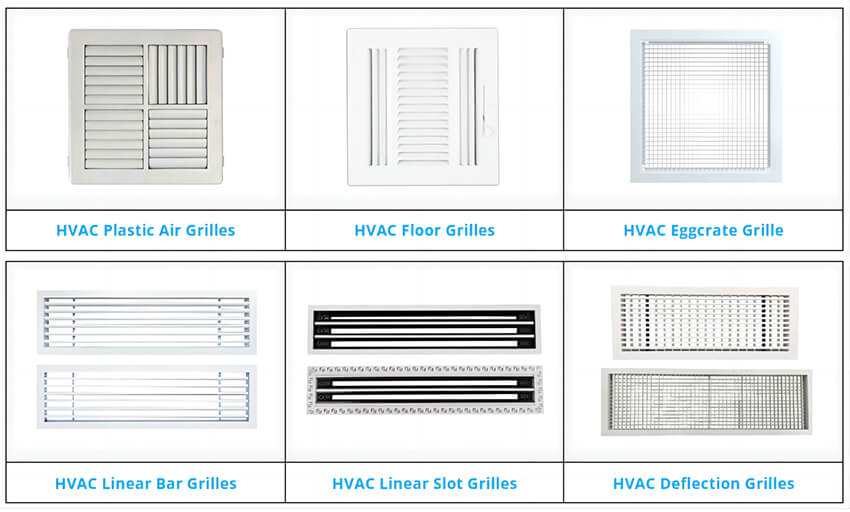
If you want to know more, please click below:
- HVAC Linear Slot Diffusers – The Ultimate Guide
- HVAC Egg Crate Diffuser – The Ultimate Guide
- HVAC Jet Nozzle Diffuser – The Ultimate Guide
- HVAC Linear Bar Grilles – The Ultimate Guide
- HVAC Air Swirl Diffusers – The Ultimate Guide
- HVAC Round Ceiling Diffusers – The Ultimate Guide
- Round Ceiling Diffusers – The Ultimate Guide
- HVAC Return Air Grille – The Ultimate Guide
- Exhaust Air Louver – The Ultimate Guide
- HVAC Registers – The Ultimate Guide

